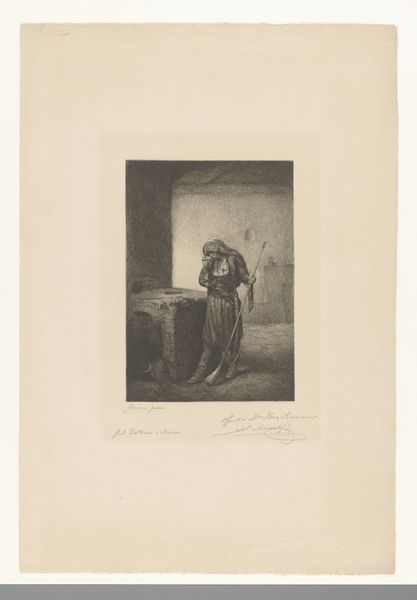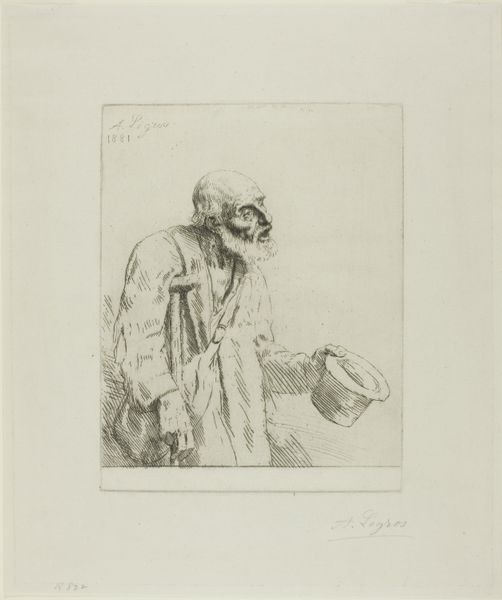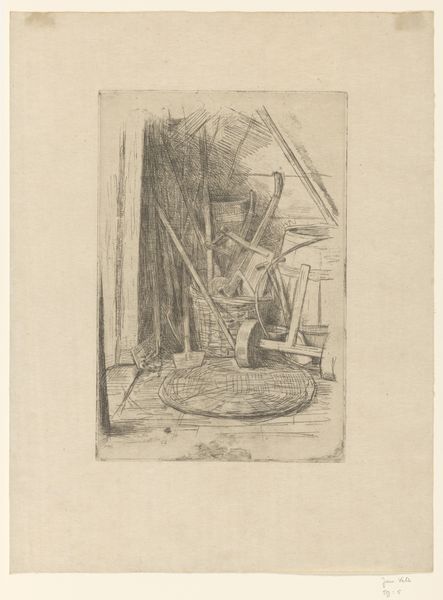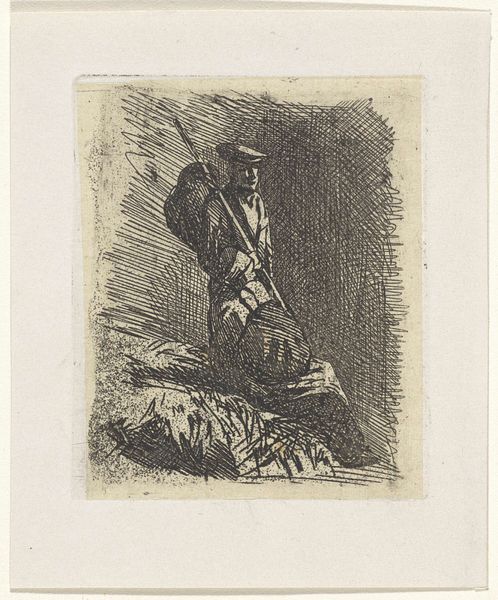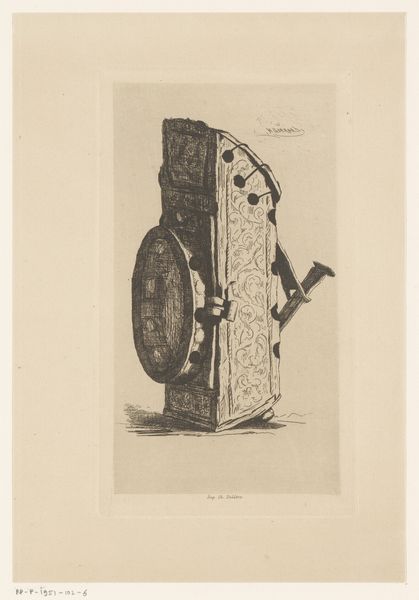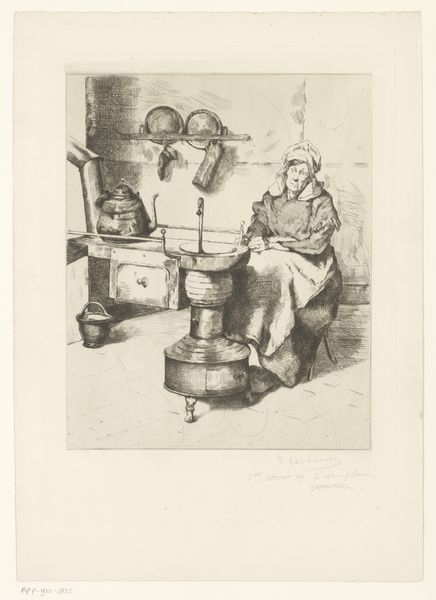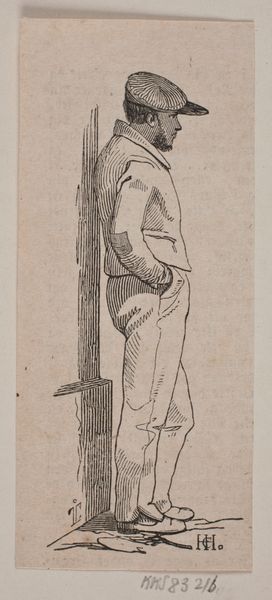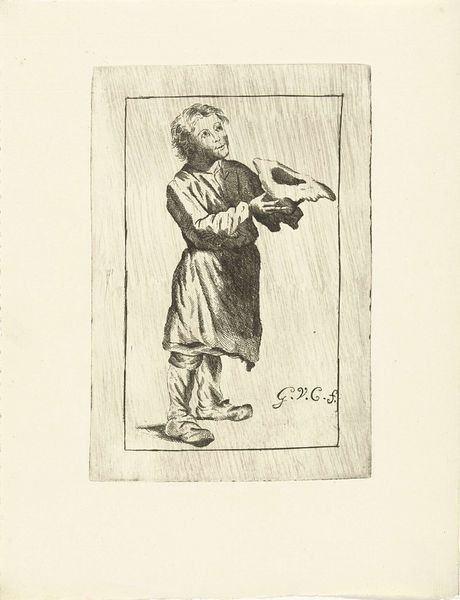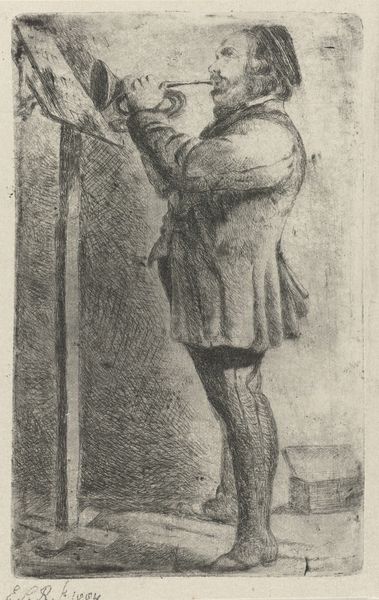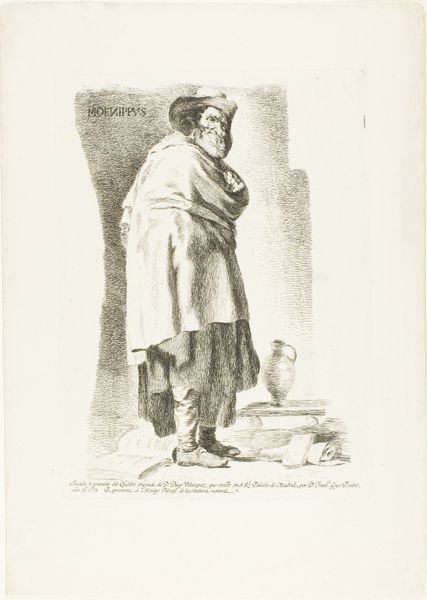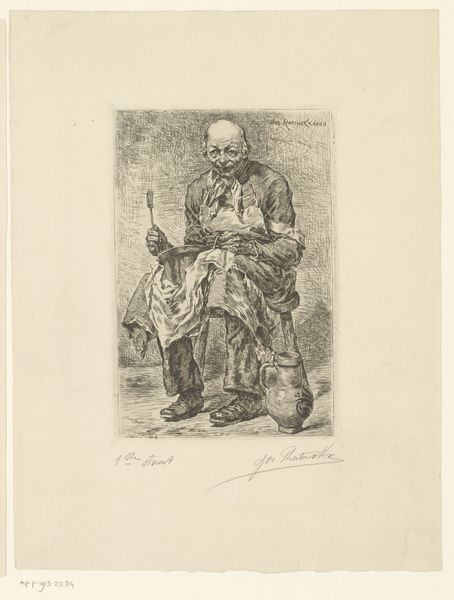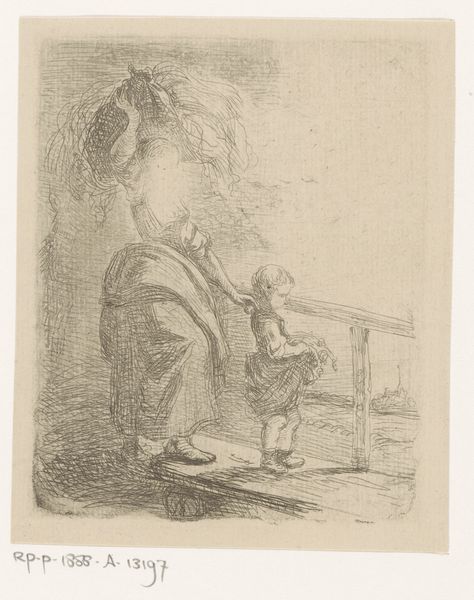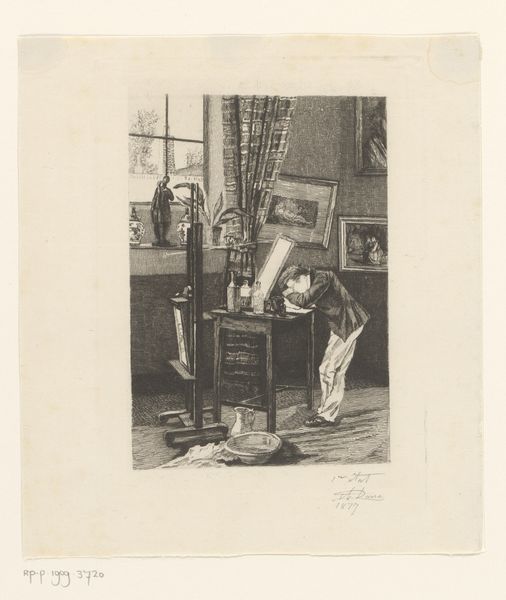
Dimensions: 243 × 166 mm (image); 378 × 273 mm (sheet)
Copyright: Public Domain
Curator: Here at The Art Institute of Chicago, we're looking at Camille Pissarro's lithograph "Peasant Woman Churning Milk," created around 1896. It’s a rather unassuming piece in terms of material presence – paper, ink, the matrix from which it came, likely stone given the era… But what immediately grabs me is the depiction of manual labor. Art Historian: It evokes a feeling of quiet diligence, doesn't it? The woman is positioned centrally, her form dominating the space. But it's not just her individual act; it speaks to the broader context of rural life and agricultural societies at the end of the 19th century. Pissarro often depicted peasant life, imbuing his scenes with a sense of dignity and realism, right? Curator: Precisely! I'm especially drawn to how the printmaking process itself mirrors the labor it depicts. Think about the repetitive actions – the grinding of the stone, the inking, the pressing of each print. There's a direct connection between the means of production in the art and the subject of the work. What does this say about art’s relationship to the commodification of rural work, considering the circulation of these prints? Art Historian: It’s a poignant question! These images brought rural life to urban audiences, often romanticizing it, of course. But the work's availability as a print also raises questions of access and ownership. The print becomes a commodity, available for purchase and display within bourgeois homes, enabling an interesting commentary about consumption of imagery. Curator: Right. It is fascinating to consider the kind of labor required for butter production back then, compared to now! What do you think Pissarro was hoping to capture with this work, given the context of its production? Art Historian: The changing agricultural landscape due to industrialization. As urban life rapidly changed during the Industrial Revolution, images like these captured and preserved traditional rural life which many people in that moment started to leave. Curator: Absolutely! This really makes you wonder about what it really took to produce food items like butter on the domestic level during this era. It certainly adds a new depth to the artistic context, making it all the more palpable. Art Historian: Indeed. I came away thinking about what these pieces truly mean today, compared to then.
Comments
No comments
Be the first to comment and join the conversation on the ultimate creative platform.
